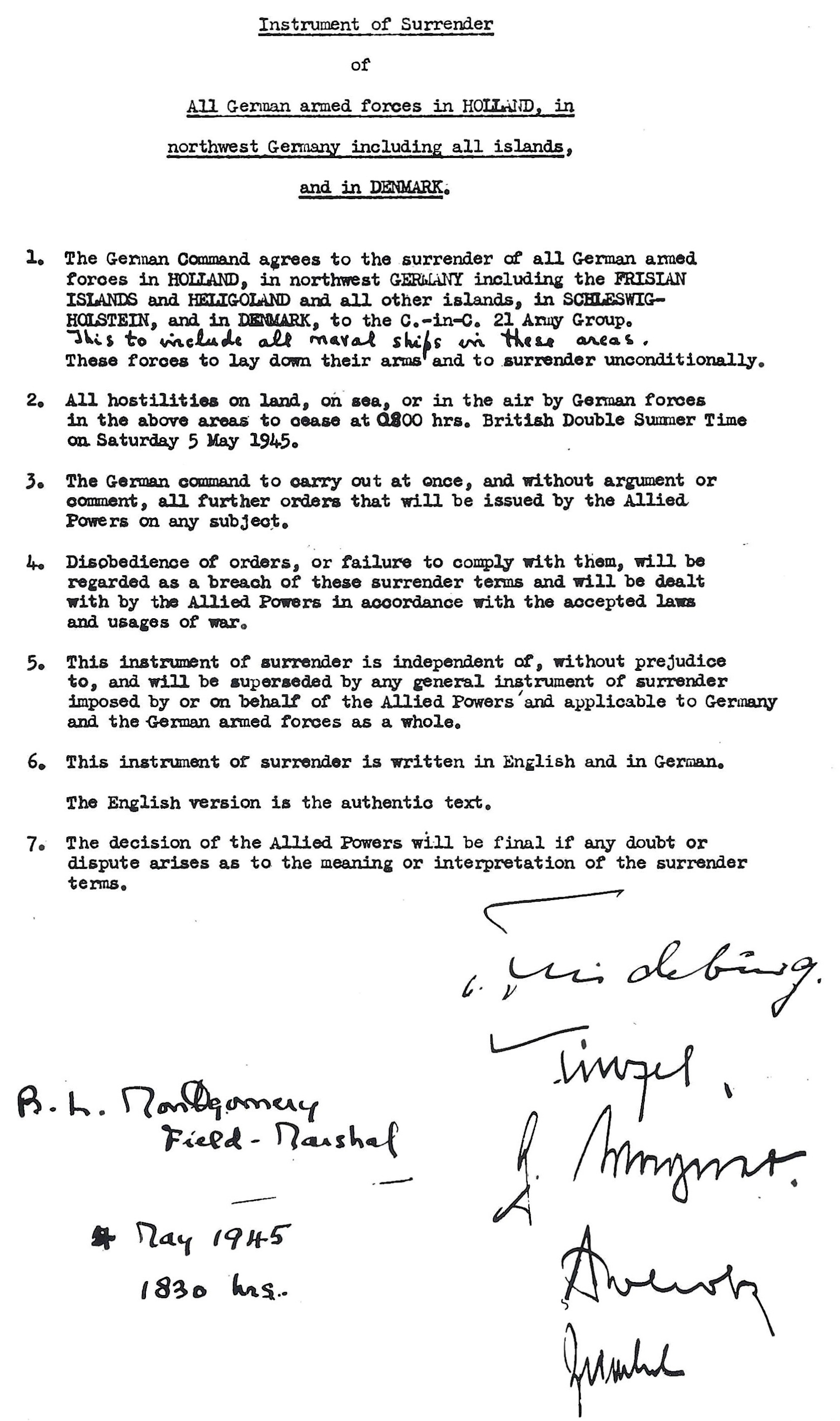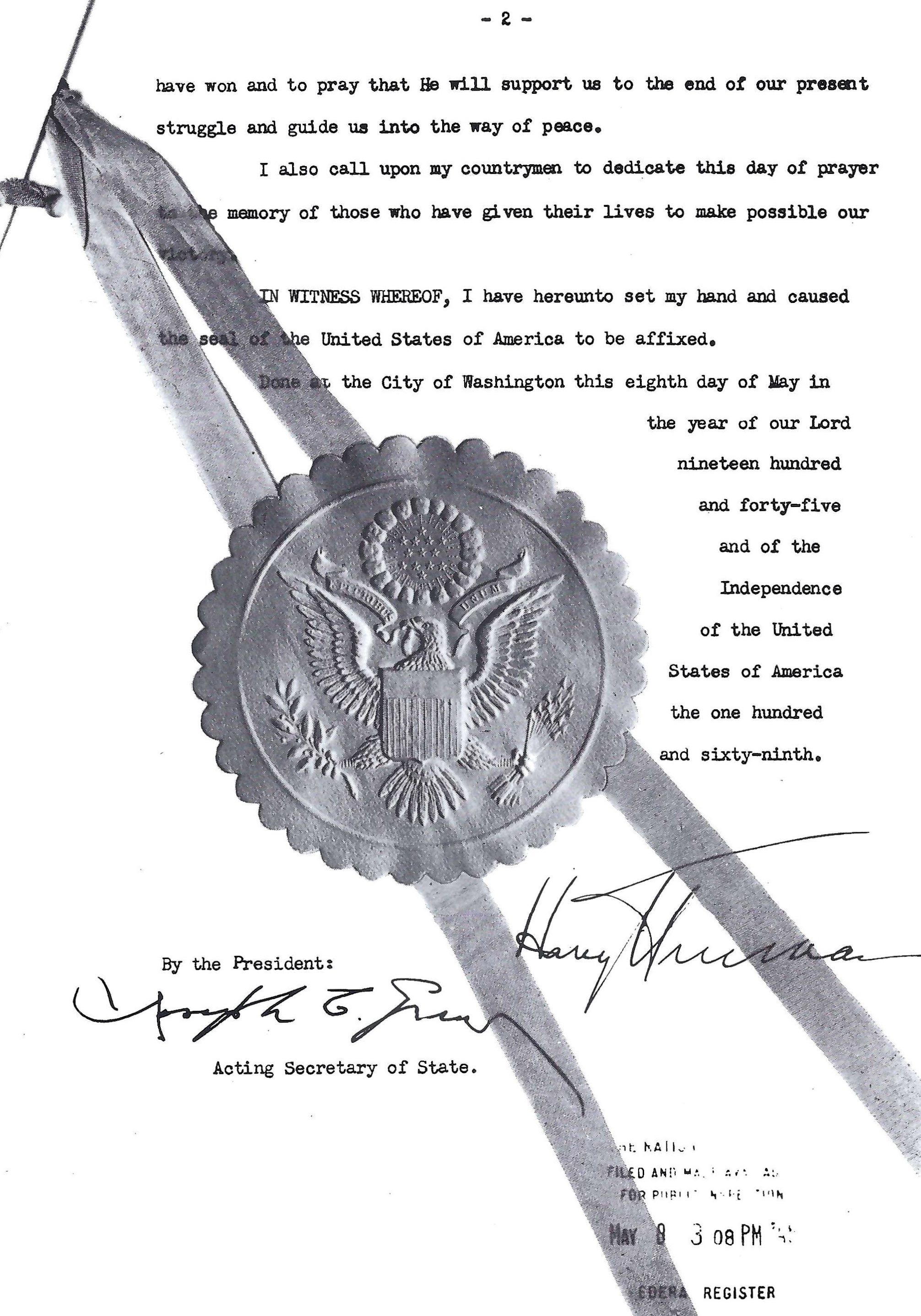BEFORE the might of Allied arms, vaunted Festung Europa, Fortress Europe, crumbled into final ruin in the spring of 1945 and its Nazi masters died ignominiously or slunk into hiding like the criminals they are, leaving substitute fuehrers to yield in unconditional surrender. Thus the Nazi revolution against the morals of modern civilization came to an end. It came so close to succeeding, however, that the testimony of its failure, the surrender documents signed at Liineburg, Reims, and Berlin, will remain forever among the most significant records of our times.
Squirming under the heels of the victorious Allied Expeditionary Force and the conquering Red Army, the Germans, in the vain hope of obtaining a softer peace, sought to surrender only to the AEF. At Liineburg, Field Marshal Sir Bernard Law Montgomery sternly rejected the bid for a surrender of the German armies in Holland, northwest Germany, and Denmark to the AEF alone. Trapped, General Admiral Hans Georg von Friedeburg, who had become head of the German Navy when Grand Admiral Karl Donitz succeeded Hitler as Reichspresident, consequently yielded those armies to all the Allies when he surrendered to Montgomery on Liineburg Heath on May 4, 1945, 3 days before the general surrender at Reims. Kinzel, G. Wagner, Poleck, and Friedel also signed this document.

On May 5, General Admiral von Friedeburg arrived at General Dwight D. Elsenhower's AEF Headquarters at Reims. Final capitulation was expected at once, but again the Admiral tried to avoid surrendering to the Soviet High Command. He claimed he had no authority to do so. Lieutenant General Walter Bedell Smith, Chief of Staff to General Eisenhower, for whom he acted, refused to consider such a partial surrender, and finally Von Friedeburg asked Reichspresident Donitz to authorize him to accept the Allied terms or to send someone who could.
Colonel General Alfred Jodl was so authorized and flew to Reims.

It was nearly 3 a. m., 0241 hours, on May 7 when the unconditional surrender of "all forces on land, sea, and in the air" under German control was signed by Jodl for the German High Command, by Smith for the Supreme Commander of the Allied Expeditionary Force, and by General Ivan Sousloparov for the Soviet High Command. General Francois Sevez of the French Army witnessed the signing. Military operations were to cease, the document provided, on May 8 at 2301 hours, central European time.


Orders were issued at Reims for the carrying out of the surrender of the German Army and Air Forces on the Western Front, in Norway, and in the Channel Islands, and, in a document signed by Admiral Sir Harold M. Burrough, the surrender of the German Naval Forces, including the U-Boat Fleet, was provided for. Besides the general surrender document, Jodl signed an agreement that representatives of the German High Command would meet later to execute a formal ratification of the surrender.

For this purpose Donitz designated General Field Marshal Keitel, Chief of Staff of the Armed Forces High Command and Commander in Chief of the Army, General Admiral von Friedeburg, Commander in Chief of the Navy, and Colonel General Hans Jiirgen Stumpff, representative of the Commander in Chief of the Air Forces.

The ratification meeting took place on May 8 in Berlin. There another instrument of surrender, which except for one or two additions repeated the Reims document, was signed by the German officers named by the Reichspresident, by Air Chief Marshal Sir Arthur Tedder for the Supreme Commander of the Allied Expeditionary Force, and by Marshal Georgi Zhukov for the Supreme High Command of the Red Army. Carl Spaatz, Commanding General of the United States Strategic Air Forces, and F. de Lattre-Tassigny, Commanding General of the First French Army, were witnesses. The Berlin surrender was drawn up in English, Russian, and German, but it was specified that only the English and Russian texts were "authentic."








Victory in Europe became official in the United States on May 8, 1945. On that day President Truman issued a proclamation proclaiming the end of the war in Europe and designating Sunday, May 13, as a day of prayer and thanksgiving.


